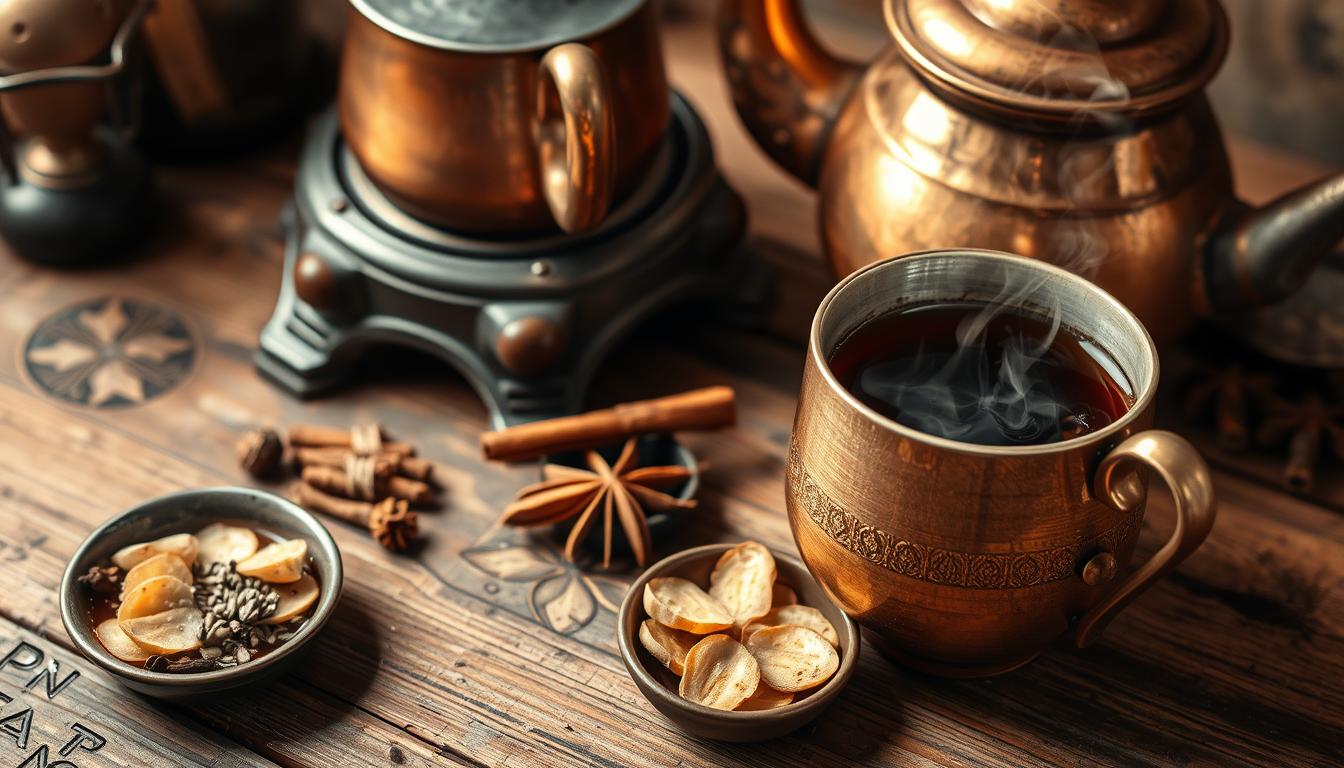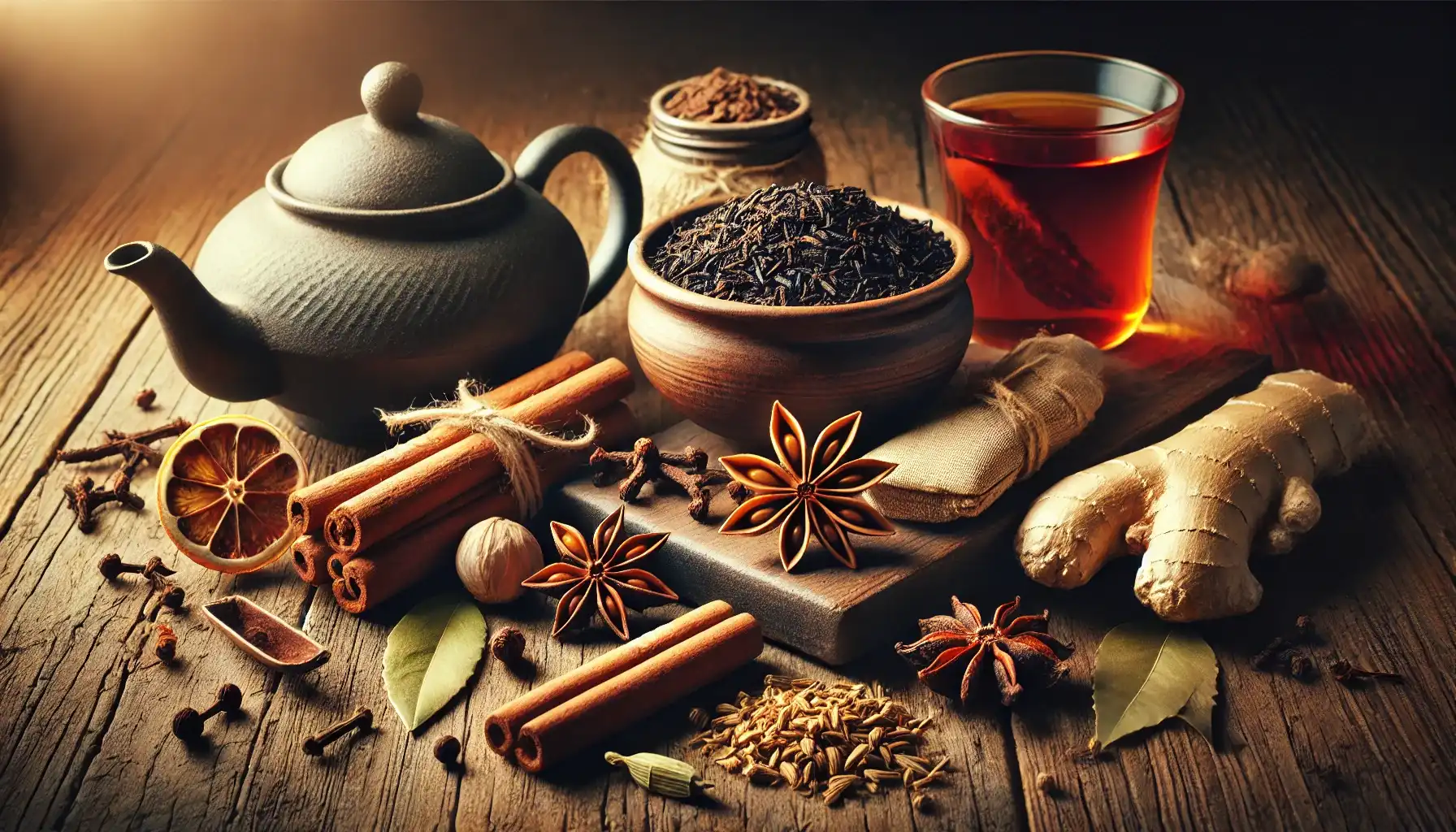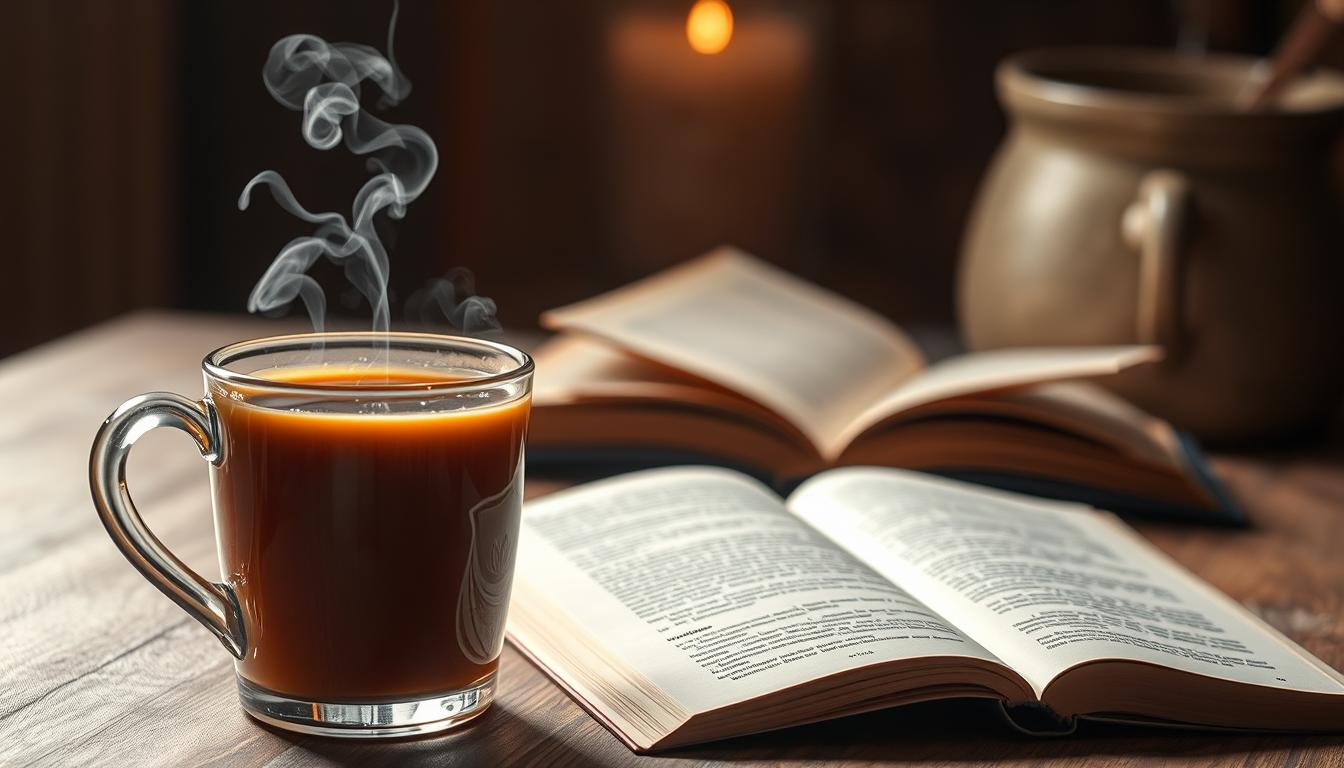Did you know that over 159 million Americans drink a form of tea daily? Among the most popular choices is chai tea, a flavorful blend of spices and black tea leaves. But what about its caffeine content? Let’s dive into this question and uncover the details.
Chai tea is crafted using a base of black tea, which naturally contains caffeine. The amount can vary depending on factors like brewing time and the specific tea variety used. This makes it a unique beverage compared to other caffeinated drinks like coffee.
The word “chai” itself means tea in many languages, and this drink has been enjoyed for centuries. Its blend of spices like cinnamon, cardamom, and ginger creates a warm, comforting flavor. But how does it affect your system? Stay tuned as we explore its ingredients, brewing methods, and more.
Key Takeaways
- Chai tea contains caffeine due to its black tea base.
- Caffeine levels vary based on brewing time and tea variety.
- The word “chai” translates to tea in many languages.
- Chai tea offers a unique flavor profile with spices like cinnamon and cardamom.
- It interacts differently with your system compared to coffee.
Exploring the Origins of Chai Tea
Chai tea’s journey from India to the world is a tale of tradition and adaptation. This spiced beverage has deep roots in Indian culture, where it was first crafted as a warming drink. Known as masala chai, it combines black tea with a blend of aromatic spices.

The word “chai” itself means tea in many languages, highlighting its universal appeal. In India, it’s more than just a drink—it’s a symbol of hospitality and connection. Over time, this traditional recipe has evolved, gaining popularity in the West as a creamy, sweetened version called the chai latte.
Traditional Masala Chai Recipe
Traditional masala chai is a flavorful blend of black tea and spices. The key ingredients include cinnamon, cardamom, clove, ginger, and pepper. These spices not only add warmth but also offer health benefits.
Here’s how it’s typically prepared:
- Boil water with loose black tea leaves.
- Add spices and simmer for a rich flavor.
- Mix in milk and sweetener, then strain and serve hot.
This recipe varies by region, with some adding more ginger or less cardamom. The result is a comforting drink that’s both aromatic and soothing.
Evolution into Chai Latte
As chai tea traveled to the West, it underwent a transformation. The American version, known as the chai latte, is creamier and sweeter. It often uses a concentrated chai mix or syrup, combined with steamed milk.
Unlike the traditional version, the chai latte is less about the spices and more about the creamy texture. This adaptation reflects local tastes, making it a popular choice in coffee shops across the U.S.
While both versions share a common origin, their preparation and flavor profiles highlight the cultural differences between traditional and modern interpretations.
Key Ingredients: Spices, Milk, and Tea Blends
The magic of chai lies in its carefully chosen ingredients. Each component plays a vital role in creating its signature flavor and aroma. From the warmth of spices to the creaminess of milk, every element contributes to the final experience.

Distinctive Spice Profiles
Spices are the soul of chai, offering depth and complexity. Traditional recipes often include cinnamon, cardamom, clove, ginger, and pepper. Each spice brings its unique character:
- Cinnamon adds sweetness and warmth.
- Cardamom introduces a floral, citrusy note.
- Clove provides a bold, slightly bitter edge.
- Ginger offers a spicy kick and digestive benefits.
- Pepper enhances the overall spiciness.
These spices can be adjusted to suit personal preferences, making every cup of chai unique.
Choosing Your Tea Base
The tea base is the foundation of chai. Black tea is the most common choice, known for its robust flavor and caffeine content. It pairs perfectly with the bold spices, creating a balanced blend.
For a lighter option, green tea can be used. It offers a milder taste and lower caffeine levels, making it ideal for those seeking a gentler experience. Both options highlight the importance of selecting high-quality leaves for the best results.
Milk is another essential ingredient, adding creaminess and smoothing out the spices. Whether you prefer dairy or plant-based alternatives, milk transforms the blend into a comforting, indulgent drink.
Ultimately, the key to a great chai lies in the harmony of its ingredients. A well-balanced blend ensures a rich, aromatic, and satisfying beverage every time.
Does chai tea have caffeine: Unpacking the Caffeine Content
Understanding the caffeine content in your favorite drink can help you make informed choices. Chai tea, with its rich blend of spices and black tea, offers a unique balance of flavor and energy. But how much caffeine does it actually contain? Let’s break it down.
Natural Caffeine in Black Tea
The caffeine in chai tea comes from its base ingredient: black tea. On average, a cup of chai contains about 40-70 milligrams of caffeine. This amount can vary depending on factors like brewing time and the specific tea blend used.
Black tea naturally contains caffeine, but its interaction with tannins in the tea leaves leads to a steadier absorption by your system. This means you’re less likely to experience the jittery crash often associated with other caffeinated drinks.
Caffeine Comparison with Coffee
When compared to coffee, chai tea offers a gentler caffeine experience. A standard cup of coffee contains around 95 milligrams of caffeine, nearly double that of chai. This makes chai a great alternative for those seeking a milder energy boost.
Latte variations, like the popular chai latte, might alter the perceived caffeine amount. The addition of milk and sweeteners can dilute the overall caffeine content, making it even more approachable for sensitive individuals.
Ultimately, chai tea provides a balanced caffeine experience. Its unique blend of spices and black tea creates a drink that’s both flavorful and energizing, without the harsh side effects of stronger beverages.
Factors Affecting Caffeine Levels in Chai
The caffeine in your cup of chai can vary based on several factors. From brewing techniques to ingredient choices, each step influences the final content. Let’s explore how you can control these elements to craft the perfect blend.
Brewing Time and Temperature
The time you steep your tea leaves plays a crucial role in caffeine extraction. Longer brewing periods allow more caffeine to release into the water. However, over-steeping can lead to a bitter taste.
Temperature also matters. Hotter water extracts caffeine faster, but it can overpower the delicate spices. For a balanced blend, aim for water around 200°F and steep for 3-5 minutes.
Impact of Milk and Additives
Adding milk or cream can dilute the caffeine concentration, making the drink milder. This is why a chai latte often feels less intense than traditional masala chai. Sweeteners like honey or sugar also alter the flavor profile without affecting the amount of caffeine.
Experiment with different ratios to find what works best for your system. A splash of almond milk or a dash of cinnamon can transform your recipe into a personalized treat.
By adjusting these factors, you can fine-tune your chai to match your preferences. Whether you prefer a strong, energizing cup or a soothing, creamy drink, the power is in your hands.
Chai Tea Versus Other Caffeinated Beverages
When it comes to caffeinated drinks, chai tea stands out for its unique qualities. Unlike coffee or energy drinks, it provides a gentler energy boost. This makes it a popular choice for those who want to avoid sharp spikes in alertness.
Chai tea typically contains less caffeine than a standard cup of coffee. While a cup of coffee packs around 95 milligrams of caffeine, chai tea offers only 40-70 milligrams. This difference makes it a milder option for daily consumption.
Caffeine Absorption Differences
The caffeine in tea is absorbed more slowly than in coffee. This is due to the presence of tannins in tea leaves, which moderate the release of caffeine. As a result, you’re less likely to experience jitters or a sudden crash.
In contrast, coffee delivers caffeine quickly, often leading to a rapid energy surge followed by a drop. Chai tea’s gradual absorption makes it suitable for various times of day, from morning to evening.
Here’s a quick comparison of caffeine levels in popular beverages:
| Beverage | Caffeine Content (per cup) |
|---|---|
| Chai Tea | 40-70 mg |
| Coffee | 95 mg |
| Chai Latte | 30-50 mg |
The overall experience of drinking chai tea is also distinct. Its blend of spices creates a warm, comforting flavor, while coffee offers a robust, bold taste. Whether you prefer a latte or a traditional preparation, chai tea provides a balanced and enjoyable beverage choice.
Health Benefits of Chai Tea
Chai tea isn’t just a delicious drink—it’s packed with health benefits too. From its antioxidant properties to its heart-healthy spices, this beverage offers more than just a comforting flavor. Let’s explore how chai tea can support your overall wellness.
Antioxidant Properties
One of the standout benefits of chai tea is its rich antioxidant content. The black tea base contains polyphenols, which help protect your cells from damage. These compounds combat free radicals, reducing oxidative stress and promoting long-term health.
Compared to green tea, chai tea offers a unique blend of antioxidants from both tea and spices. This combination enhances its protective effects, making it a great choice for those looking to boost their immune system.
Spices for Heart Health
The spices in chai tea, like ginger and clove, play a key role in supporting heart health. Ginger is known for its anti-inflammatory properties, which can improve circulation and reduce cholesterol levels. Clove, on the other hand, is rich in antioxidants that help maintain healthy blood vessels.
Together, these spices create a drink that not only tastes great but also supports your heart and overall body health. Traditional recipes often include these ingredients for their proven wellness benefits.
Whether you enjoy it as a morning pick-me-up or an evening treat, chai tea offers a calm caffeine chai experience. Its unique blend of tea and spices makes it a healthier alternative to other caffeinated beverages. So, next time you sip a cup, remember—you’re not just indulging in flavor, you’re nourishing your body too.
The Modern American Chai Latte Trend
The chai latte has become a staple in American cafes, blending tradition with modern tastes. This creamy, spiced drink has evolved from its roots in Indian masala chai to a sweeter, more indulgent version. Its rise in popularity reflects a growing love for comforting, flavorful beverages.
Traditional masala chai is a robust blend of black tea and spices like cinnamon, cardamom, and ginger. In contrast, the Americanized chai latte often uses concentrates or powder mixes for convenience. This modern version emphasizes creaminess and sweetness, appealing to a broader audience.
Adaptations in Taste and Preparation
The flavor profile of the chai latte differs significantly from its traditional counterpart. While authentic masala chai focuses on bold spices, the latte version balances these with milk and sweeteners. This creates a smoother, more approachable drink.
Preparation methods have also shifted. Traditional brewing involves simmering tea leaves and spices, while the latte style uses pre-made mixes or syrups. This adaptation makes it easier for cafes to serve quickly, catering to busy customers.
Ingredients like a dash of ginger are now popular in trendy recipes, adding a spicy kick to the creamy base. This innovation keeps the drink exciting and aligns with current flavor preferences.
The modern latte style has transformed the way people enjoy this beverage. It’s no longer just a drink; it’s a cultural phenomenon that bridges tradition and innovation. Whether you prefer the authentic recipe or the creamy latte, there’s a version for everyone.
Environmental and Ethical Considerations in Chai Production
Sustainable practices are shaping the future of chai production. From farm to cup, ethical choices ensure that every sip supports both people and the planet. This commitment to responsibility is transforming the industry, making it easier for consumers to make informed decisions.
Fair Trade and Organic Practices
Fair Trade certification is a critical factor in ethical chai production. It ensures fair wages and safe working conditions for farmers and workers. By choosing Fair Trade products, consumers directly support the livelihoods of those behind their favorite blend.
Organic farming methods are equally important. Growing tea and spices like cardamom and clove without harmful chemicals protects the environment and promotes healthier ecosystems. These practices also enhance the quality of the final product, offering a richer and more authentic flavor.
Ethical Sourcing and Credibility
Ethical sourcing goes beyond farming. It includes the treatment of every person involved in the supply chain. Brands that prioritize sustainability often highlight their commitment to transparency, building trust with consumers.
Ingredients like responsibly sourced honey further emphasize this dedication. By choosing products with certifications like Fair Trade or USDA Organic, you can enjoy your chai knowing it aligns with your values.
- Look for Fair Trade and Organic certifications on packaging.
- Support brands that prioritize ethical treatment of workers.
- Choose products with sustainably sourced ingredients.
Every purchase is an opportunity to make a positive impact. By opting for ethically produced chai, you contribute to a more sustainable and equitable world.
Enhancing Your Chai Experience at Home
Crafting the perfect cup chai at home is easier than you think. With a few simple ingredients and some creativity, you can enjoy a personalized drink that rivals your favorite café. Whether you prefer traditional recipes or modern twists, the possibilities are endless.
Homemade Recipe Ideas
Start with a classic recipe by simmering black tea with spices like cinnamon, cardamom, and ginger. Add milk and sweeten with honey for a comforting blend. For a quicker option, try using a concentrate mixed with your choice of milk. This method saves time while still delivering rich flavor.
Experiment with different tea base options, such as green tea for a lighter taste. Adjust the spice levels to suit your preferences, adding more ginger for a spicy kick or reducing cardamom for a milder profile. The key is to make it your own.
Personalizing Your Beverage
Customize your drink by choosing the type of milk that suits you best. Dairy, almond, oat, or coconut milk can all create unique textures and tastes. Add a touch of honey or maple syrup for natural sweetness, or sprinkle extra cinnamon on top for a warming finish.
For a café-style experience, try making a latte at home. Steam your milk and pour it over a strong base of spiced tea. Garnish with a dash of ginger or a cinnamon stick for an elegant touch. With these tips, you can enjoy a cozy cup chai anytime, right in your kitchen.
Conclusion
Exploring the world of chai reveals its rich flavors and cultural depth. This beloved drink, with its blend of spices like cinnamon, cardamom, and clove, offers a unique experience. Its base of black tea provides a balanced amount caffeine, making it a gentler alternative to coffee.
Brewing time and ingredient quality play a key role in shaping the final level of flavor and energy. Whether you enjoy a traditional cup chai or a modern latte, each version brings its own charm. The health benefit of its ingredients, combined with its unique absorption system, makes it a wholesome choice.
We invite you to dive deeper into the word and culture of chai. Experiment with recipes, savor its complexity, and enjoy every sip responsibly. With the right base and brewing time, you can create a perfect drink that suits your taste and lifestyle.

